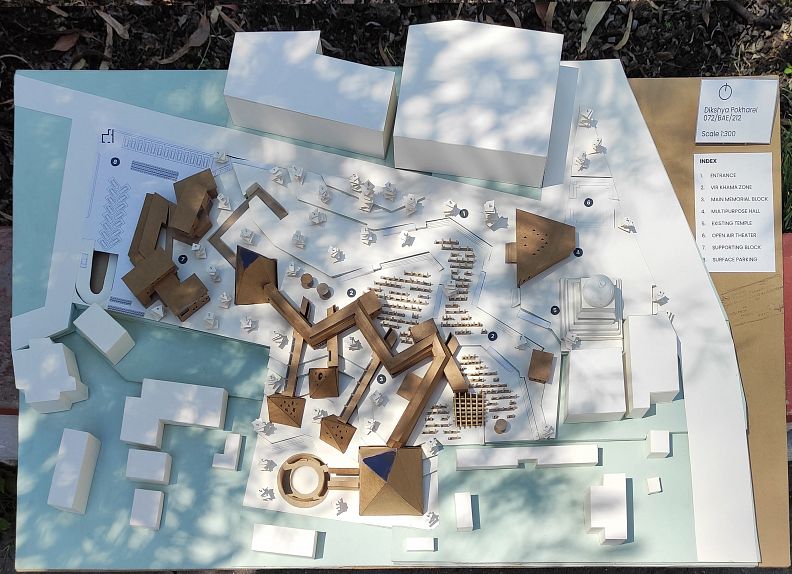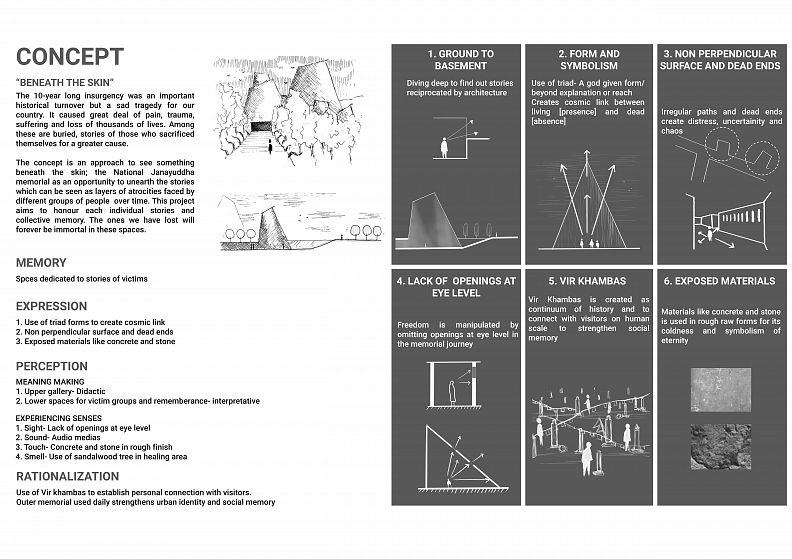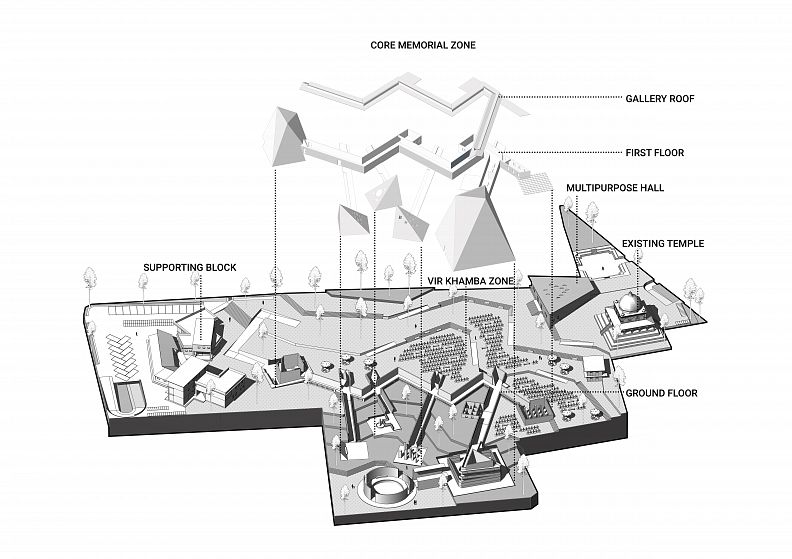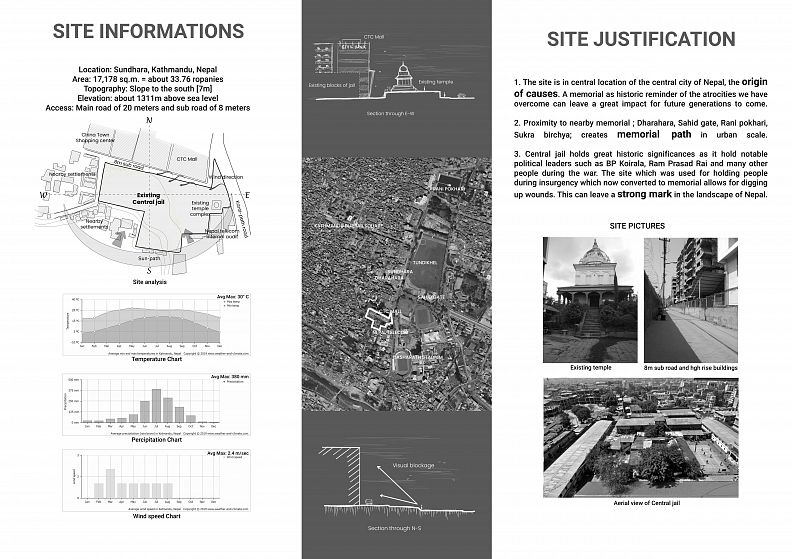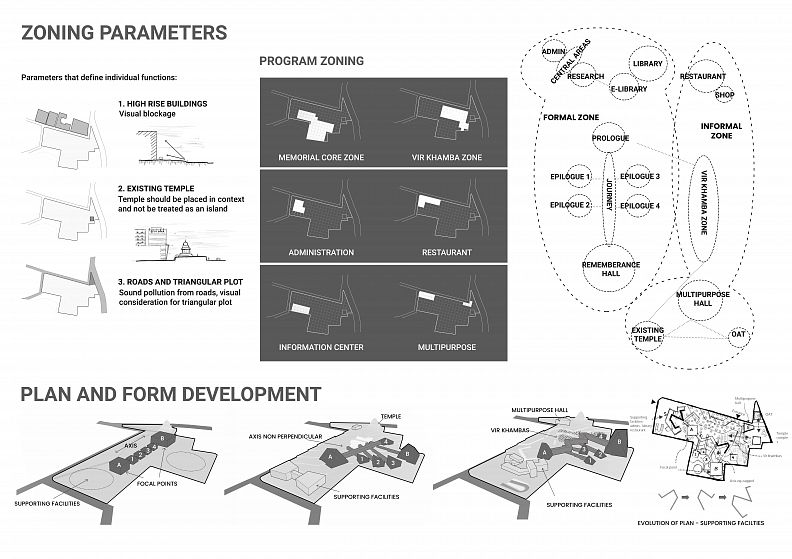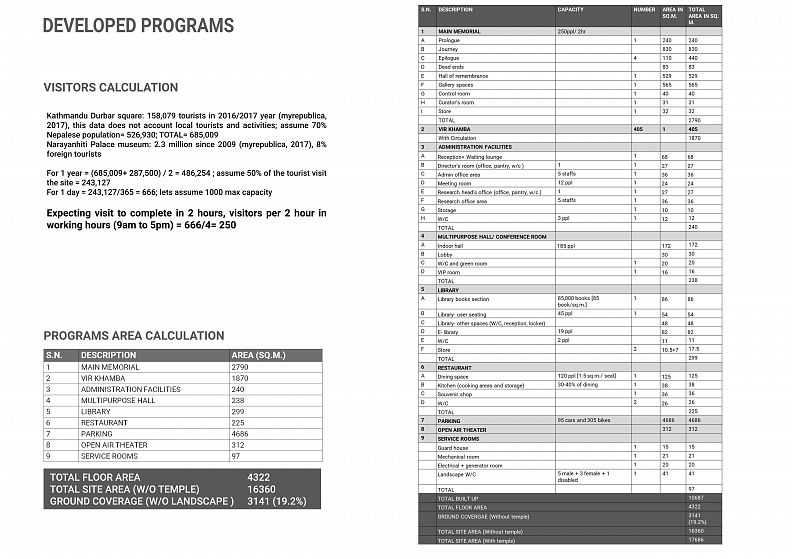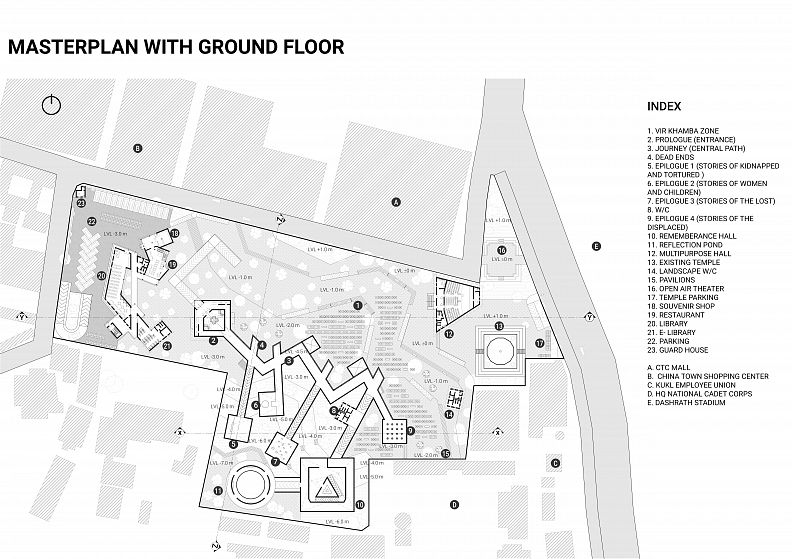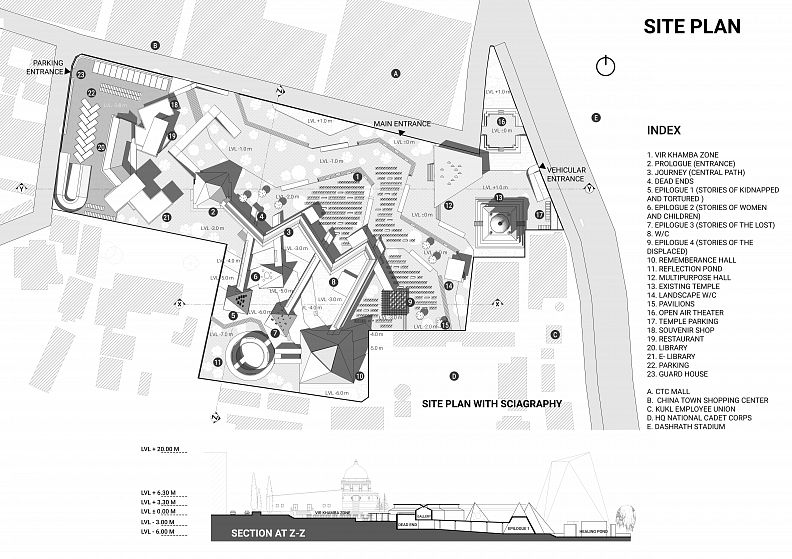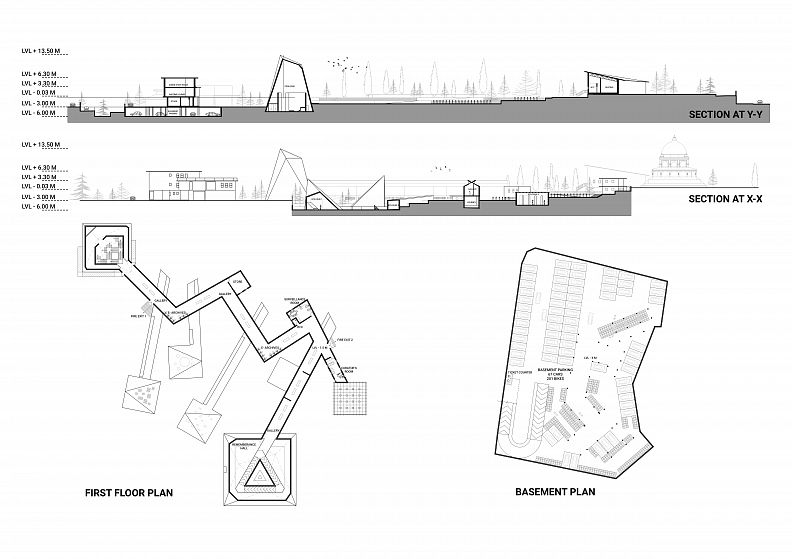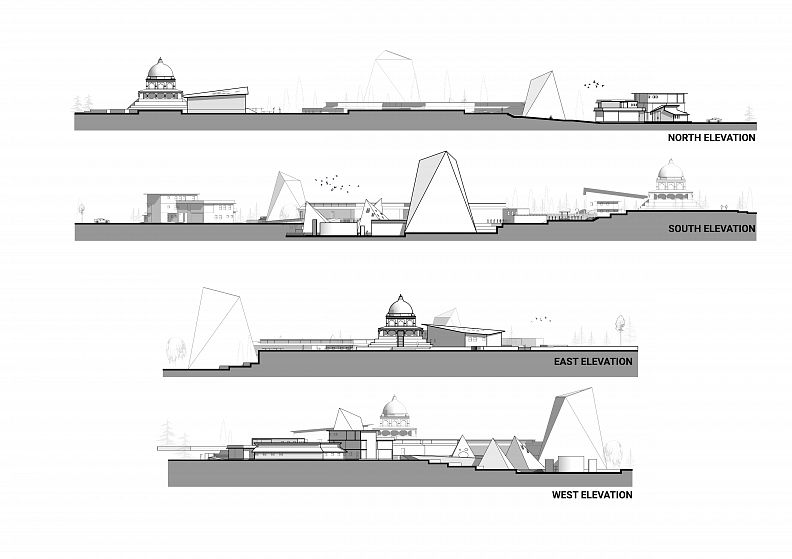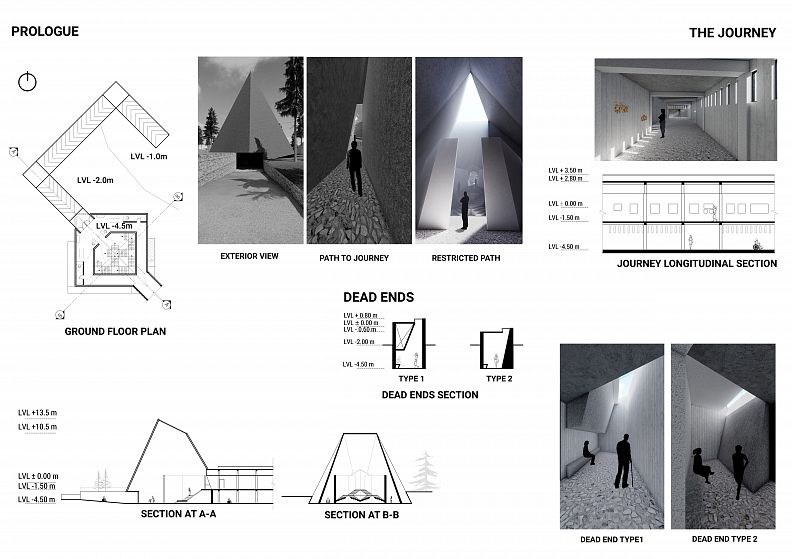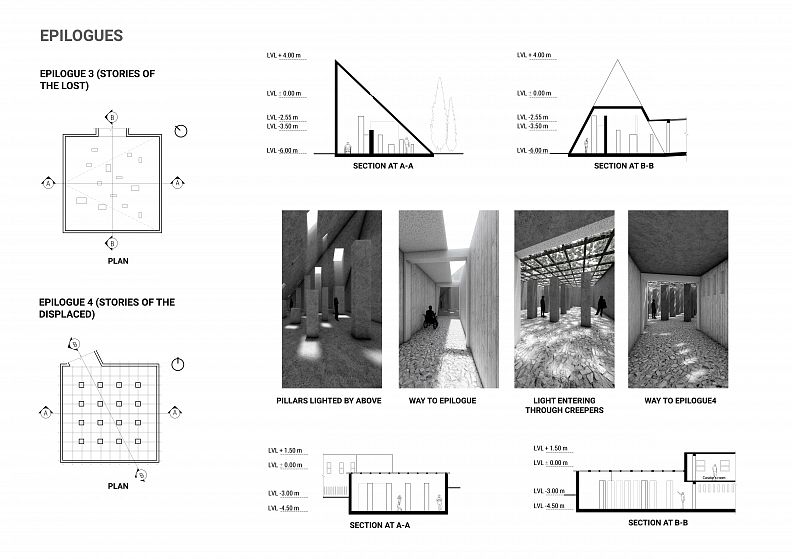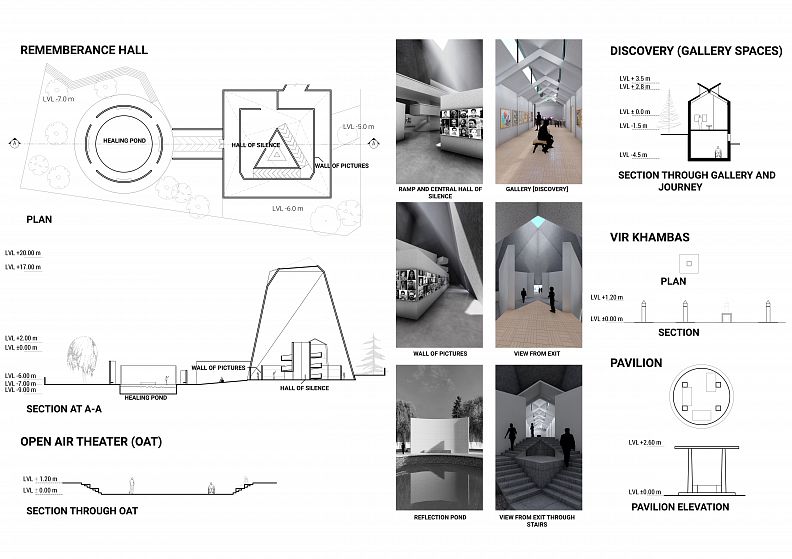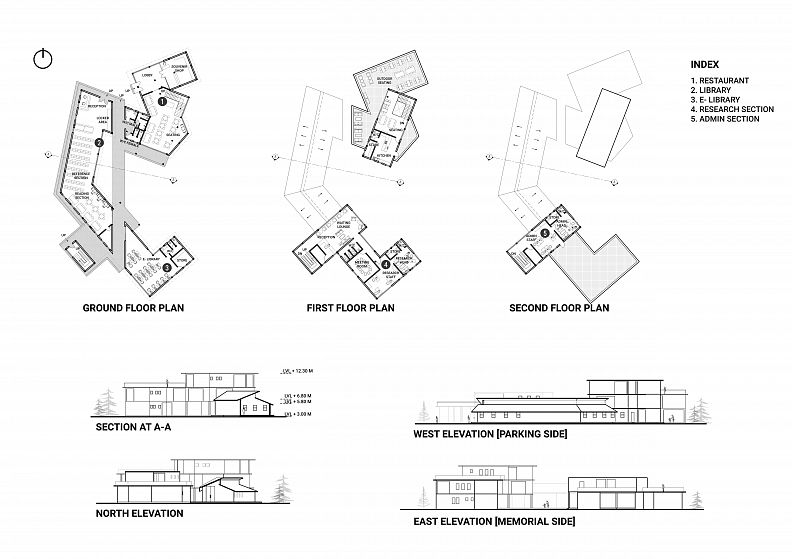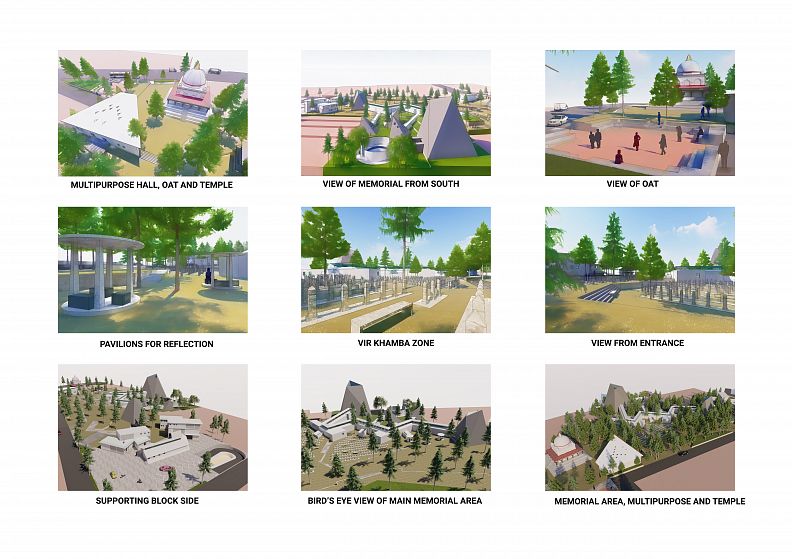Janayuddha Smarak (Civil war memorial)

Project idea
"Beneath the skin"
The 10-year long insurgency was an important historical turnover but at the same time a sad tragedy for our country, Nepal that lasted for 10 years from 1996-2006 A.D. It caused great deal of pain, trauma, suffering and loss of thousands of lives. It has been nearly 15 years that the war has ended but we still lack proper documentation and a common place to commemorate the people and the whole event. The stories of those who sacrificed themselves for a greater cause are buried deep within political quarrels and elevation of the whole event as being just a “success”.
The concept is an approach to dig the buried stories of the victims like skin from the flesh and expose the pain as a reminder of the event. Janayuddha Smarak as an opportunity to unearth the stories which can be seen as layers of atrocities faced by different groups of people over time. This project aims to honour each individual stories and collective memory. The ones we have lost will forever be immortal in these spaces.
Project description
In overall journey, the intention of the memorial is to be contemplative, reflective, peeling off and exposing the pain and trauma, unearthing stories and creating a cosmic link between the living and the departed. The building form is designed to be site responsive guided by overall conceptual idea and zoning parameters. . Firstly, from outlined programs major spaces were identified to create focus on them. Two main connection was seen; the entry point (A) and the main commemoration area (B). With respective to the site, they were aligned as being the focal points. A focal point requires an axis connecting them giving a sense of arrival. An axis was established and developed to create spaces for stories of four victim groups (1,2,3,4). Thus, a journey was formed, we arrive at an entry point that sets our mood, we visit spaces that tells us stories of different victim groups and after communicating with the stories we are led to the main memorial hall that commemorates them. Supporting facilities such as administration section, research section, library, restaurant, multipurpose hall was zoned based on parameters of program requirements and site conditions.Further the axis was developed to create a main journey path, zig-zagged to create a sense of disorientation, fragmentation, discomfort and distress (based on the main conceptual framework). Vir khambas [Hero pillars] were developed acting as an outer memorial, connected to existing temple spaces and the main memorial structure. Supporting block was also designed based on the main memorial.
Memorial journey: A narrative
Entrance: The memorial journey commences from outside as we enter through tall vertical trees mimicking the forest which can be taken as ground zero for most of the deaths.
Vir khamba zone: There is a descend through small contours and the first discovery is of Vir khambas. A continuum of our history this space is dedicated as outer memorial of the site. Vir Khamba zone is designed to be integrated to city’s daily life and accessible without any boundaries.
Prologue: After spending some time in Vir Khamba zone we move towards the core memorial zone. A large ramp descends us to the entrance building (The prologue). We see a tall pyramidical building pointing at the sky. It generates a sense of verticality for reaching beyond to the spiritual world, a god given form. The building engulfs us and we see a path that is framed by voluminous light. The lighted path is the one we cannot enter but instead we must pass through are two paths from the sides which are more dark, uncertain and ominous, accompanied by ticket counters.
Journey: Both the path leads us to the central pathway (the journey). This path connects all the other spaces of the memorial. It is marked by zig zag paths and dead ends and is a representation of the journey of all victims of the war. The journey of each individual was dark, uncomfortable, full of uncertainty but it led to different outcomes. This space is thus created to convey the same emotion that the victims had to undergo. This walkway is lit by slits above our head and can be seen as a tunnel leading towards discovery of buried stories.
Dead ends: The journey has some disturbance created by zig zag paths and dead ends. These are pocket spaces that are created to generate confusion and chaos in the central pathway. It has two typologies, both lighted primarily by skylight above. As light enters from outside through skylight, these spaces provide a cocoon for contemplation and reflection.
Epilogues: Epilogues can also be seen as dead ends. Journey leads to these spaces (epilogues) where we uncover the buried stories of different victim groups. There are four categorizations of victim groups; tortured and kidnapped, women and children, lost people, displaced people. Three epilogues are triangular structure and one is semi- open (for displaced population).
Hall of remembrance: From the journey only one path escapes to give us a sense of freedom, a view into the outside. That path must pass through this hall of remembrance. If Vir khambas are outer memorial then, the hall of remembrance is inner memorial. Vir khambas consist of names and the hall of remembrance consists of pictures. This hall is pyramidical shaped similar to the entrance building and is the tallest structure in the site signifying its importance. It has height of 26 meters (at apex) and is lighted by a triangular skylight above. We journey through wall of pictures as we remember our loved ones.
Reflection pond: From hall of remembrance a path leads to outside, the reflection pond. We see outside for the first time in the memorial journey. This pond is guarded by tall walls to give us personal space for reflection and contemplation. Trees like weeping willow, sandalwood tree surrounds the pond to accompany the mood.
Discovery: There is a triangular ramp that connects the hall of remembrance to the gallery spaces above. We move closer to the light as we ascend from the hall to the gallery (discovery). These gallery spaces are meant to document the war and impart knowledge in pictorial and textural form. The space is lit only by skylight above using butterfly roof light for uniform distribution of light on both the walls. The space consists of exhibits on either walls and sitting spaces are provided at certain intervals.
Exit: The gallery spaces lead us back to the first entrance building (the prologue). Gallery leads us to the lighted path we saw upon entry which was restricted to us. We descend from stairs and exit from the same path completing our journey.
Technical information
The main memorial uses a combination of thin shell structure and the traditional beam and column frame structure in major parts. The pyramidical, triad spaces use the concept of shell theory to sustain loads. The structures need not be considered for live loads but only dead loads and environmental loads (earthquake loads, wind loads). Reinforced concrete shells are used acting as a monolithic structure and their thickness can be calculated as per design load.
The central pathway (journey) including upper galleries, supporting block use column and beam RCC frame structure. Column of width 300 mm X 300 mm are used along with beam of 230 mm X 325 mm. The bays are in between 2m to 6m and width of slab is 100 mm. The gallery spaces use butterfly roofing with secondary beam at the center tying the whole structural frame.
Multipurpose hall uses space frame truss system. The space frame used is of 1.5 m X 1.5m in size. The skylights are integrated with the space frames where desired.

